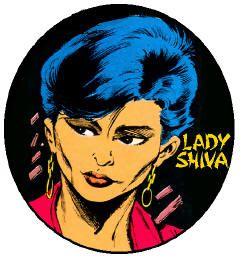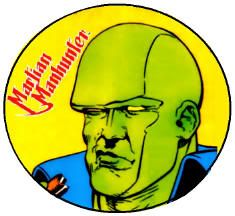
I only picked up three comic books from February of 1985. I recall seeing Amazing Spider-Man #265 in a three pack and not being impressed, while I've never to this day continued the Captain Britain/Mordred story into Captain America #306 because of that lousy cover (not that Paul Neary's interiors were any more scintillating.) Peter Parker, the Spectacular Spider-Man #103 had a compelling cover, but I think Spidey just fought normal people inside, so I didn't follow up on it. I pulled the surpringly solid Tales of the Teen Titans #54 out of a quarter bin, but that was so many years later (anytime from 1989 to the early '90s) that it doesn't count here. Having noted those I passed, the books I did buy this month stuck with me long after the fact.
Dreadstar and Company #1 was one of the most important comics I've ever purchased. I still had beat up copies of my uncle's abandoned Captain Marvel and Warlock comics, which had made me a fan of Jim Starlin for as long as I can remember. However, this was easily the most influential and my favorite of the three. Dreadstar was Starlin purging himself of all of his rage against organized religion (Catholocism specifically) and the military-industrial complex with a clarity inaccessible during the acid trips of his earlier work. Here, Starlin moved away from his strong Silver Age influences and looked to older masters like Hal Foster and Alex Raymond, a stylistic renaissance that marked the pinnacle of his abilities. The actual story in this one comic is no great shakes-- a lengthy recap of "The Metamorphosis Odyssey" from Epic Illustrated, the 1981 Eclipse original painted volume The Price, and Marvel Graphic Novel #3, followed by a cute heist short story that demonstrated the book as a whole being a well above average Star Wars pastiche (not unlike Firefly, come to think of it.) However, the ground covered here got a young reader up to speed on a rich cosmos of continuity, and I was ravenous for successive issues.

Daredevil #220 sported a striking cover, which complemented a story that haunted my memory forevermore. Matt Murdock's ex-girlfriend Heather Glenn wouldn't leave him alone, until something happened to her that he couldn't ignore. Driven by guilt, Daredevil investigated the circumstances of a tragedy, and was not at all consoled by the answers he found. Where Dreadstar had epic scope that confronted me with big issues, this story was one of the first mature works I read, in that it made me keenly aware of the choices made in life that are irrevocable and often damning. The sick feeling of responsibility for the damage suffered by others is a weight we all carry, and Denny O'Neil warned me in a tale far more sophisticated than the preachy '70s garbage he built his legacy upon. David Mazzucchelli was a perfect compliment, defining "grim and gritty" with a moody noir that illustrated true human frailty. This was more than an entertaing periodical-- this meant something.

Finally, there was New Mutants #29, initially the dog of a three-pack, but I can't tell you whichever other comics it came with. Bill Sienkiewicz was the poster boy for bad art in my eyes, and a critic in training boasted that even I could draw better, which was a boldfaced lie at the most basic level before considering Sienkiewicz's challenging the boundaries between funnybooks and fine art. Chris Claremont's scripts were ever a poor conduit for Sienkiewicz's pretensions, offering mutant punks in gladiatorial combat and purple prose. I singled the book out in an attempt to get rid of it at a garage sale, but nobody was buying. It stayed in my collection, and as my sensibilities matured, I began to realize my initial evaluation was clearly that of a child. I never truly developed an affection for Sienkiewicz, but more proper respect did come...

















No comments:
Post a Comment